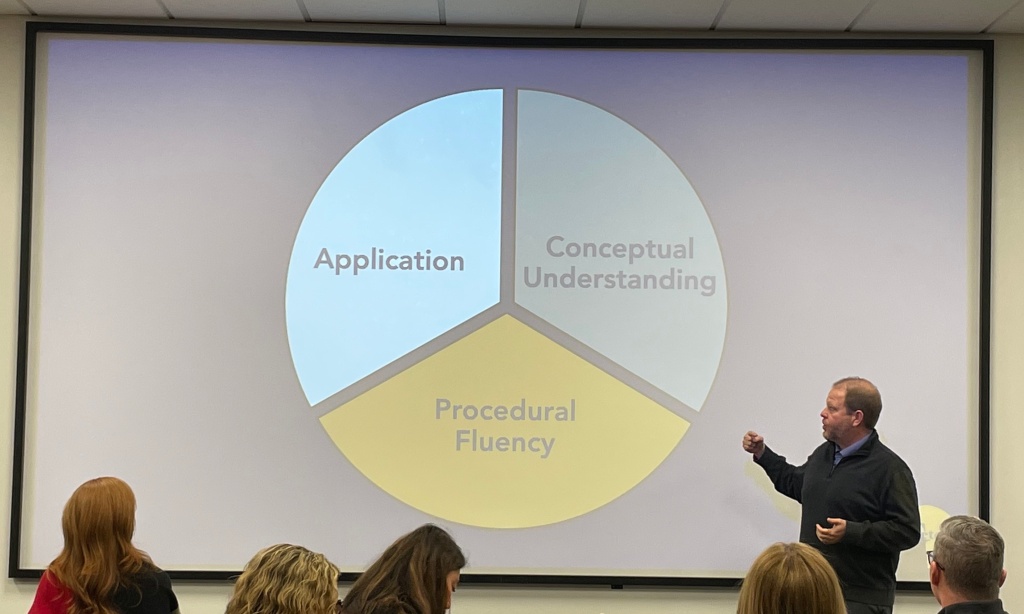My daughter, Maddie, will be turning 22 on Sunday, April 10. She is the oldest of our four children. When she was just 9 years old we bought her a dog. Ruby, the dog (not my daughter … remember her name is Maddie), is blind in one eye (she thinks she’s look at the camera) and generally can’t hear, but she has three younger brothers (that’s true for both Maddie and Ruby) to keep her acting like a puppy (Ruby – not Maddie). My oldest son Christian has a dog, Jake. My two youngest sons, Sean and Finn, have twin dogs, Rider and Comet. Needless to say we are a dog family. So what happens when our children grow up and out of the house? How can we take four dogs and divide them among six people?

Most 3rd graders should be able to attempt this problem, but not solve it “correctly”. What about 4th graders? 5th graders? … High school?
Of course if we enact our skills of extracting critical information from the situation (does it matter what ailments Ruby has or how old my daughter was when she got her?), and then apply the algorithm of either “repeated” subtraction or the notion of fair-share, we realize each one of my family members (myself included) would be able to cuddle up with just 2/3 of a dog once properties of division are satisfied and we all agree fractions are numbers too. The math makes sense, but I really hope you see a problem with a fractional solution in this unrealistic situation. The real (non-mathematical) answer is that my wife and I keep all four dogs.
In 2001, the National Research Council published Adding it Up: Helping Children Learn Mathematics as a guide for educators to rethink how mathematics should be taught in grades pre-K through 8. The core of the text suggests there are five strands that are necessary for learning mathematical concepts.

Graham Fletcher presented some of his learning progressions at the Montgomery County Intermediate Unit recently. This image of Graham shows a simplified form of the five strands where Application serves as a big bucket category for strategic competence, adaptive reasoning and productive disposition.

Building authentic context around problems, and engaging students in modeling and conceptual understanding offers greater opportunity for students to participate in their learning. The introduction of design thinking, project based learning and interdisciplinary teaching and learning may be a bit of a stretch right now. Consider the dynamics of your classroom, and the balance of rational thinking versus algorithmic thinking that you expect from your students on a daily basis.
Can you infuse experiences that allow students to develop critical thinking (effect size = 0.49) and exercise creativity (effect size = 0.58)? Have you tried 3-Act math activities? They are built into the enVision program already, and if you’re looking for more check out Graham Fletcher, Andrew Stadel, Robert Kaplinsky (Open Middle is another activity worth exploring) and of course Dan Meyer. If 3-Act math is old news, let’s now consider design challenges and project based or problem based experiences. As unique as each of our individual students can be, the experiences we design for them can be just as unique. Let’s start scrambling the content, strategies, and experiences into authentic and holistic learning moments to get out of the eggs-in-one-basket approach to education.
Postscript: if you’re looking for resources on design thinking and project based learning for your classroom, I’ll be posting additional content to help (sorry to leave you hanging at the moment) … but we can always use your help in creating new experiences. If you’re interested in helping, please reach out.